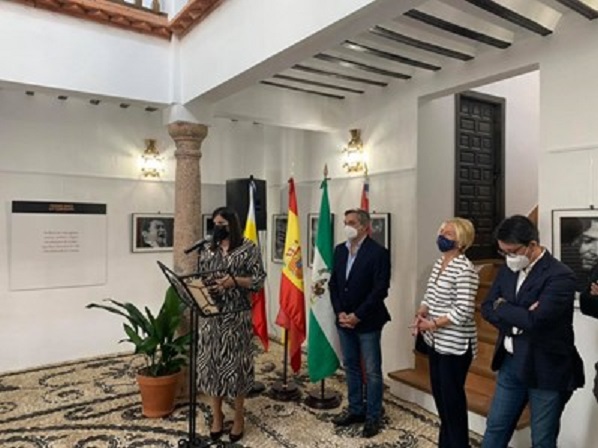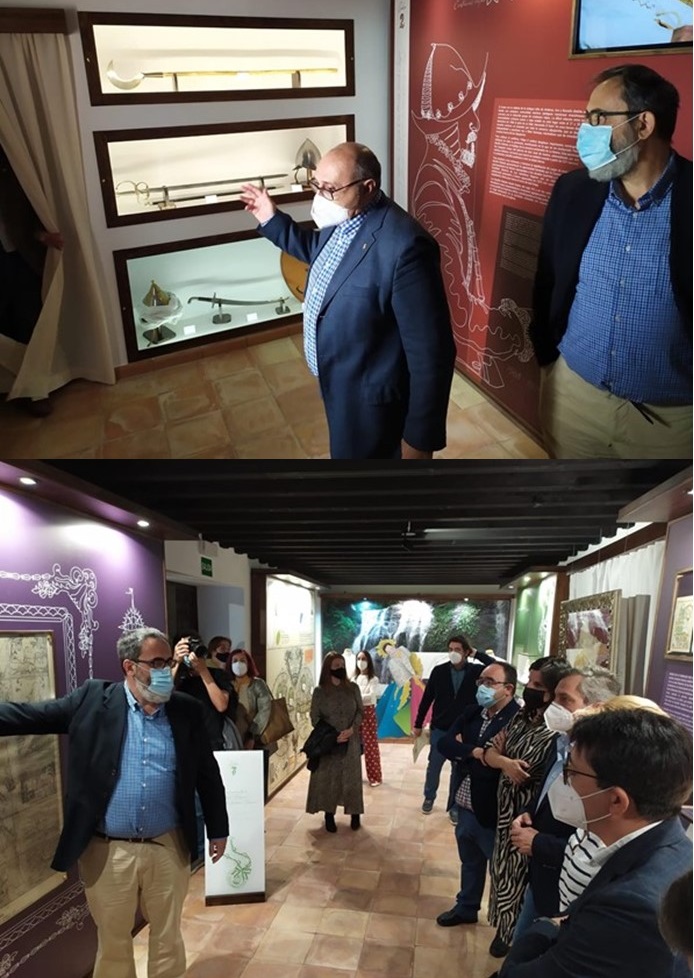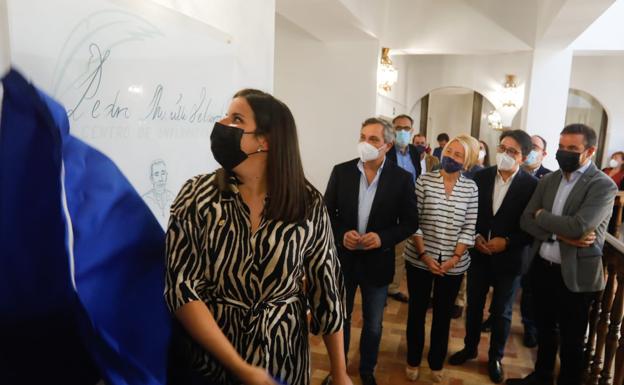
The municipal government of Laujar de Andarax inaugurated the latest addition to the town’s Cultural Hispano-Filipino (Hispanic-Filipino Cultural Center): the Centro de Interpretación Pedro Murillo Velarde (Pedro Murillo Velarde Interpretation Center).
The Pedro Murillo Velarde Interpretation Center comprises seven rooms on the history of one of the town’s most illustrious sons, Father Pedro Murillo Velarde (1696-1753), Jesuit missionary, jurist, poet, historian, geographer. His legal works are considered of great significance and continue to be republished today, as seen in his Course on Hispanic and Indian Canon Law.
Murillo Velarde is perhaps best known as the author of the first map of the Philippine archipelago, the Carta Hydrographica y Chorographica de las Yslas Filipinas. The map, which was created with the help of two Filipinos, Francisco Suarez and Nicolas Dela Cruz Bagay, was commissioned by the Spanish King Felipe V in 1734, and has since figured prominently in the Philippines’ territorial claims within the West Philippine Sea.
Philippine Ambassador to Spain H.E. Philippe Lhuillier sent his congratulatory message to the Municipality officials, noting that the Center’s inauguration is a symbol of the dynamic relations between the Philippines and Spain. He further noted the continued importance of the twinning agreement between Antipolo City and Laujar de Andarax in forging closer ties between the two cities.
Laujar de Andarax, located within the province of Almería, Andalusia, is a municipality twinned with the city of Antipolo, Rizal, where Murillo Velarde carried out a good part of his work in the Philippines. The town’s Hispanic-Filipino Cultural Center was first opened in August 2019, with exhibits on their most prominent citizens, as well as a space showcasing Philippine festivals, history, traditions, and national attire.
All photo credits: Municipality of Laujar de Andarax

Translation of an article appearing in Ideal Adra on 18th October 2020
“El hermanamiento de Laujar con Filipinas se cierra con el nuevo centro Murillo Velarde”
Laujar’s twinning with the Philippines is sealed with the new Murillo Velarde center
The cultural structure tells the story of the Almerian, a missionary in the Philippine Islands, who mapped the archipelago for the first time
ANDRES MALDONADO Laujar de Andarax Sunday 18 October 2020, 00:44

The Hispanic-Filipino Cultural Center of Laujar de Andarax is now a complete reality with the inauguration of the Pedro Murillo Velarde Interpretation Center. It is a space composed of seven rooms in this building devoted to the dissemination of the history of one of the most illustrious characters of this municipality, Father Pedro Murillo Velarde (1696-1753), Jesuit, jurist, musician, poet, historian, geographer, Spanish missionary, and author of the first map of the Philippines.
The Pedro Murillo Velarde Interpretation Center is one of the fundamental pieces of this Cultural Center that opened its doors in August of last year and that in all this time has already established itself as a cultural and tourist reference of La Alpujarra and the rest from the province. The investment of the Almería Provincial Council and the Laujar de Andarax City Council in the rehabilitation of the space for all citizens has exceeded half a million euros.
The mayor of the town, Almudena Morales, participated in the inauguration of the Interpretation Center, as well as other authorities who were accompanied by historians Juan Carlos Viloria and Valeriano Sánchez, and by Sergio Pineda, designer of the Center. After unveiling the plaque of the Pedro Murillo Velarde Interpretation Center, the parish priest of the municipality, Federico Parra, blessed the new premises. The original office of another illustrious Laujar citizen, Francisco Villaespesa, which is exhibited at the Cultural Center, was also visited.
“This has to be a meeting point for culture in Laujar and the entire region. The facilities are magnificent. We have managed to turn some houses that were almost in ruins into a wonderful cultural center. We hope to continue counting on the support of the Diputación and the Delegation of the Board to fill this space with content,” said Almudena Morales at the event, in which she also praised the figure of Murillo Velarde, “a national hero in the Philippines whom we had to claim.”
The museum space has different areas distributed in different rooms with an exhibition narrating the life of Pedro Murillo Velarde and his role in the Philippine islands, since he was the author of the first map of the island country – then under dominion of the Spanish Empire – while in another room the history, culture and festivals of these islands are reviewed, with which the Alpujarra municipality is twinned.
The Hispanic-Filipino Cultural Center of the Laujar de Andarax municipality also pays tribute to another of its most famous citizens with the Francisco Villaespesa Municipal Library, which has a playroom, study rooms and a book depository. The building has another multipurpose room that allows workshops and one more room for exhibitions.
One of the rooms of the Laujar de Andarax Hispanic-Filipino Cultural Center is reserved for exhibitions. Until today the photographic exhibition ‘Donde nace el temprano’ can be seen in this space. It is an exhibition composed of 30 images of the last 30 years of flamenco in Almería by photographer Antonio Jesús García, and which is part of a multidisciplinary project that was made with the aim of raising awareness about this artistic expression as part of the heritage of the province.
The exhibition – which has already had its first stage in the Provincial Palace – shows the cultural importance of flamenco and the province’s contribution to this immaterial art with the so-called cantes de Almería: taranto and taranta. It is worth highlighting the great prominence of the detailed plans of all the photographs, since according to the author: “They give greater expressiveness and plasticity to the images.” ‘Donde nace el temprano’ can be enjoyed in the Purchena Scenic Space from Monday until November 1.
